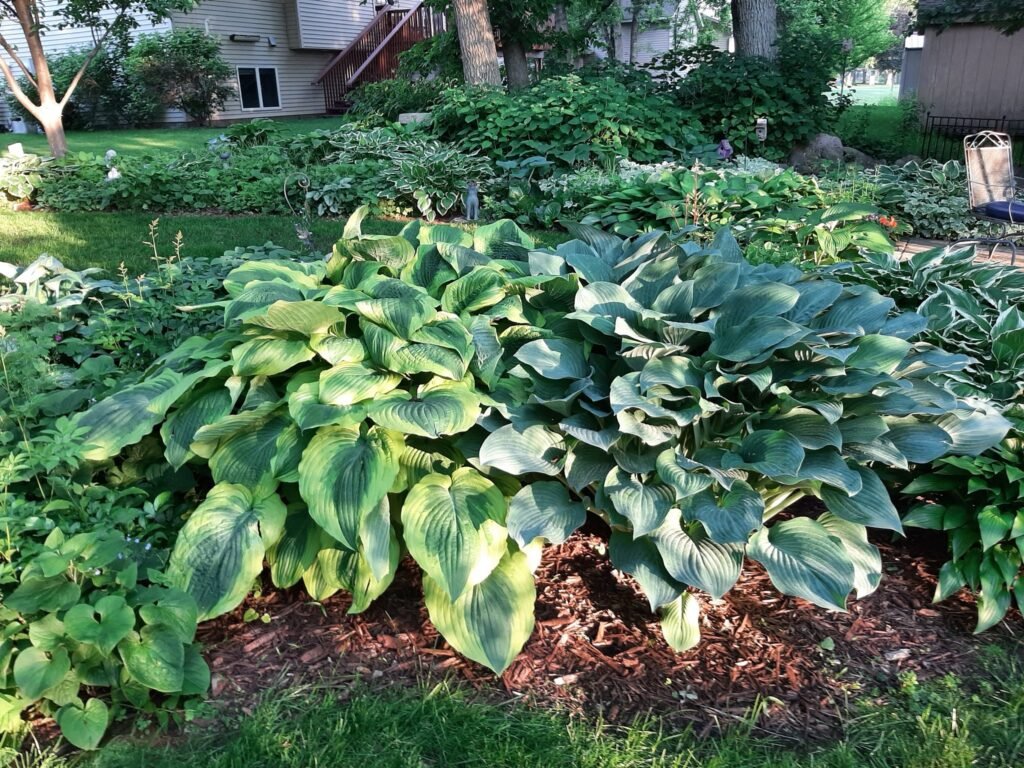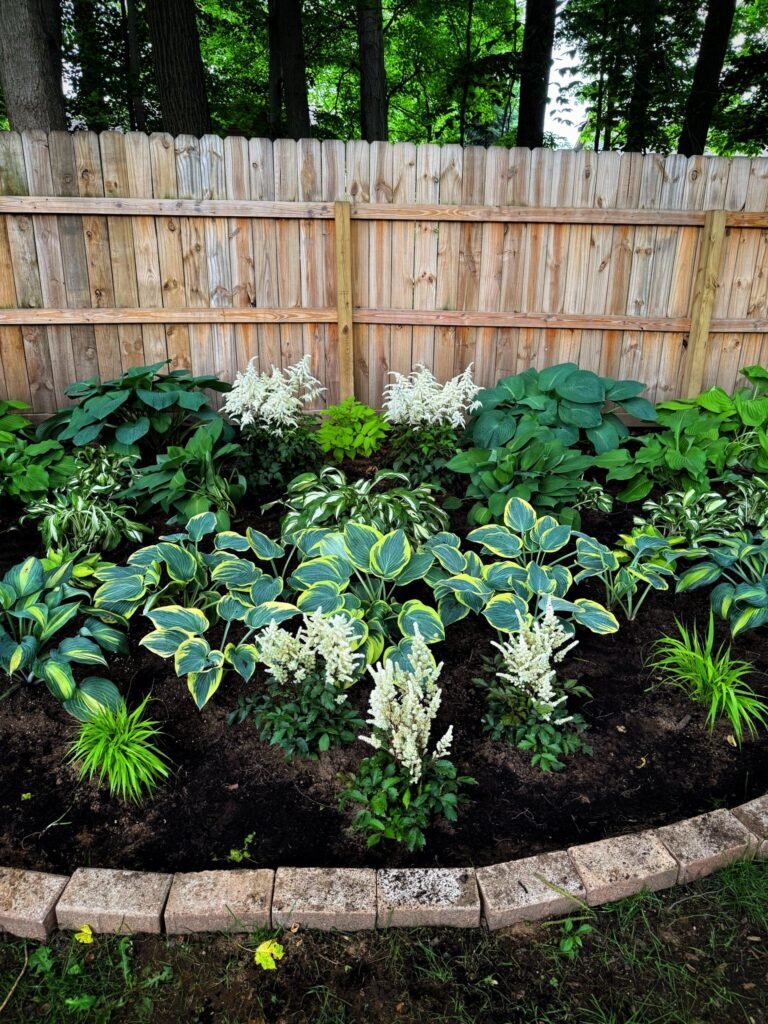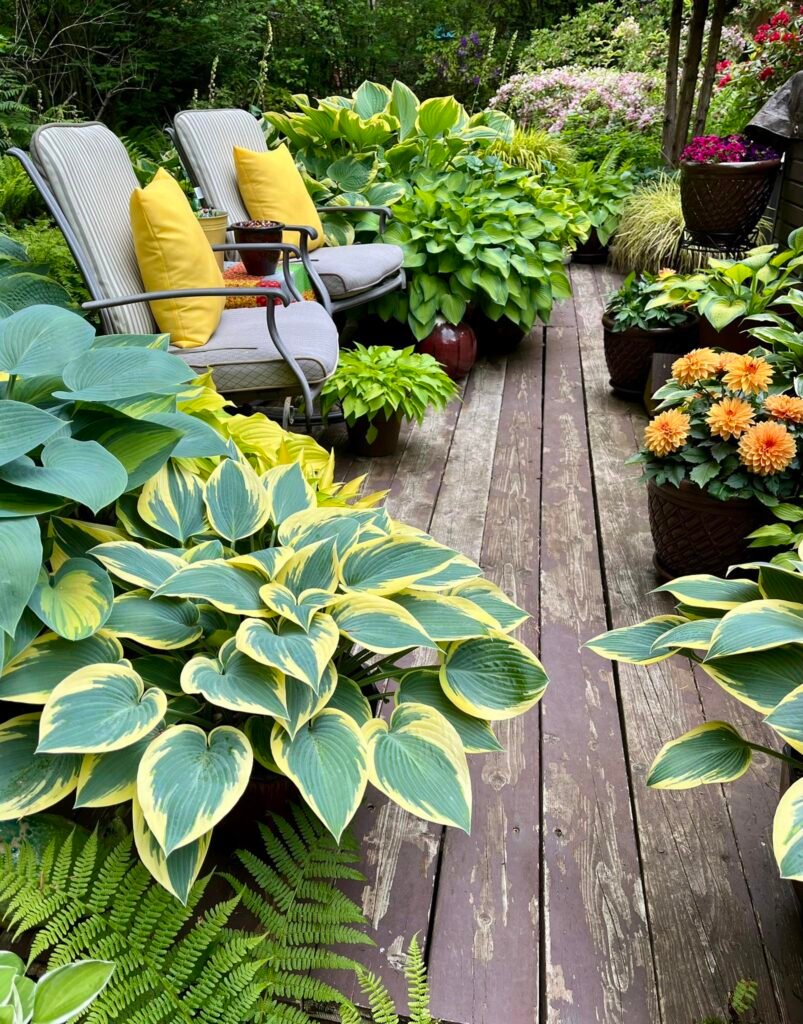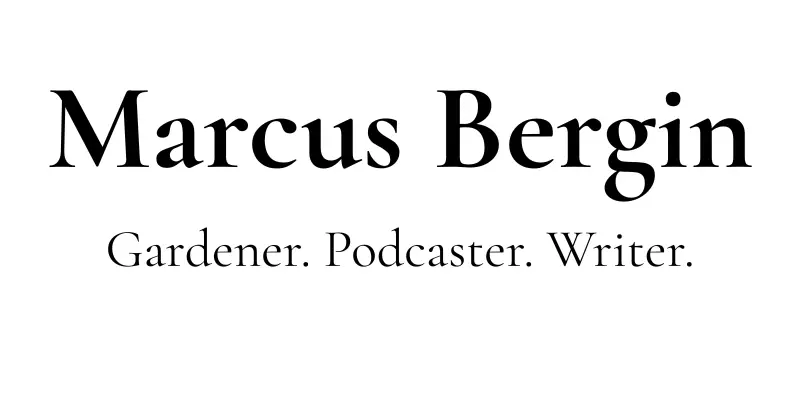
The Gentle Art of Growing Hostas: A Full Guide to Care, Colour, and Keeping Them Happy
There’s something almost meditative about tending to hostas. The way their leaves unfurl each spring like silk fans. The way light catches on waxy blues and creamy margins. But behind their lush appearance lies a simple truth—hostas are tough, forgiving, and a delight to grow… if you meet them halfway.
Whether you’re growing them in pots, borders, or under that tricky maple tree, this guide walks you through everything you need to know—from choosing the right variety to helping them thrive through the seasons.
Why Hostas?
Few plants offer as much foliage drama in shady spaces. From dinner-plate leaves to tight clumps of miniature charmers, hostas bring structure, texture, and elegance wherever you plant them. They pair beautifully with ferns, heucheras, brunnera, and spring bulbs—and they do most of the work for you.
Choosing the Right Hosta for Your Garden

With thousands of cultivars, the hardest part is often choosing. Here’s a quick cheat sheet:
Large-leaf types like Sum and Substance or Empress Wu make bold statements in large borders or as focal points.
Miniature varieties like Blue Mouse Ears tuck into containers or the front of a shady path.
Blue hostas prefer full or part shade and benefit from shelter from direct afternoon sun.
Gold and variegated types can tolerate a bit more sun, especially in cooler climates, and brighten up darker corners.
USDA zones: Most hostas thrive in Zones 3–8, with hardiness depending on variety. They require a dormancy period, so they’re not ideal for very hot, frost-free regions.
Where to Plant Hostas
Think of hostas as woodland dwellers at heart. They love:
Dappled shade: Morning sun with afternoon shade is ideal.
Moist, rich soil: Not waterlogged, but never dry for long.
Sheltered spots: Wind can shred those gorgeous leaves.
If you’ve got heavy clay or rooty dry shade, all is not lost. Work in plenty of organic matter—compost, leaf mould, well-rotted manure—and try a few tough varieties like Halcyon or Frances Williams to see what takes.
Watering and Feeding
Water deeply: Especially in hot weather. Shallow watering = shallow roots.
Mulch in spring: Helps retain moisture and keeps the soil cool.
Feed lightly: Too much nitrogen can make leaves floppy. A balanced, slow-release fertiliser in early spring is enough.
Container Growing
Yes, hostas grow happily in pots—and they’re easier to defend from slugs that way.
Choose a large container with good drainage.
Use a peat-free, moisture-retentive compost—add perlite or grit to help drainage.
Water regularly, especially in summer.
In winter, move pots to a sheltered spot, like an unheated garage or near a wall. Don’t keep them bone dry, but don’t let them sit soaked either.

Dealing with Pests and Problems
Ah yes. Slugs. They love hostas like we love chocolate.
Barrier methods: Copper tape, crushed eggshells, or wool pellets.
Night patrols: Go out with a torch and remove them by hand.
Biological controls: Nematodes can help, applied in moist soil when temperatures are right.
Tougher leaves: Blue or thicker-leafed hostas tend to be less attractive to slugs.
Yellowing leaves? That could be sunburn, dryness, or the natural ageing of older leaves. Pull them gently away when they fade.
Dividing and Propagating
After 4–5 years, most hostas benefit from division:
When: Spring or early autumn.
How: Lift the clump, split it with a spade or sharp knife into sections (each with roots and shoots), and replant or pot up.
Growing from seed? It’s fun but unpredictable. Most seedlings won’t look like the parent—especially variegated types. If you’re after something specific, go for a division or small plant.
Hosta Companions
Pair hostas with:
Ferns
Heucheras
Astilbes
Brunnera
Pulmonaria
Tiarella
Epimedium
These create a layered, textured effect in the shade garden.
What to Do When They Don’t Thrive
Sometimes hostas sulk. Common issues include:
Dry soil under greedy trees
Too much sun (look for scorched tips)
Poor drainage causing rot
Adjust the location or improve the soil—most often, that makes all the difference.
Patience and Presence
Growing hostas isn’t about instant results. It’s about watching the garden shift through the seasons—about the quiet joy of spotting the first shoots in March or the way dew pools on a fresh spring leaf. Hostas reward time, not tricks.
So if you’re just getting started, or worried that yours look a little tired, don’t fret. They’re tougher than they look. And we’re here to help, one leaf at a time.
